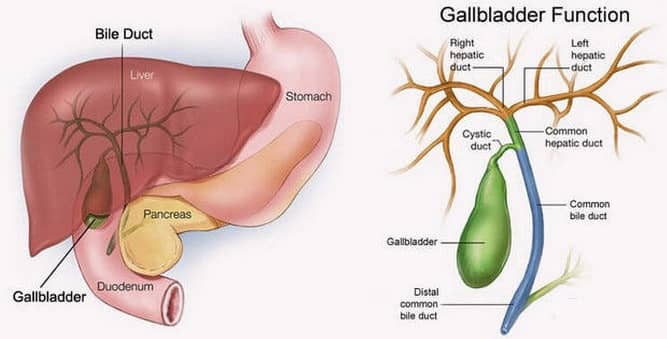Gallstones can be a confusing and quite stressful health issue to deal with. So it is natural if you think that you have them and already wondering if surgery is the only solution. Or wondering, how much does gallstones removal cost in Singapore?
We created this guide to explain what gallstones are. We also explain the specific symptoms they can cause and the various treatment options you have including when you may need surgery. But we will not stop at that.
We will also explain the recovery process and long-term lifestyle adjustments post-surgery. This means that when you read to the end of this page, you should have a clear understanding of what gallstones are and how to best address them. Keep reading!

Gallstones can simply be explained or defined as hardened deposits that form in the gallbladder. Just so you know, the gallbladder is a small organ located under the liver.
Its function is storage and concentration of bile from the liver. When needed, the gallbladder releases bile into the duodenum, the first part of the small intestine to help your body break down and absorb fats from your food.
Back to gallstones, they can vary in size and number, which explains different variations in symptoms and complications. Usually, they develop when you have an imbalance of the substances that make up bile. There are two main types of gallstones: cholesterol stones, which are the most common, and pigment stones, which are composed of bilirubin.
There are several factors that are believed to contribute to gallstones formation. High cholesterol levels in bile, too much bilirubin, or insufficient emptying of the gallbladder are some of the most notable contributors. The major risk factors for gallstones include:
In many cases, those people who have gallstones do not experience symptoms. However when the symptoms appear and you're recommended gallstones removal in Singapore, you may experience;
If gallstones are suspected, you will be referred to a specialist doctor like a gastroenterologist for further assessment and accurate diagnosis. A good provider will use a wide range of diagnostic methods to confirm the presence of gallstones. For example, they might do;
Gallstone removal in Singapore isn't always necessary unless you have gallstones which are causing a blockage in your biliary tract. If this happens and they cause problems your doctor will want to remove all the gallstones to prevent a potential recurrence of the blockage. Here are some of the most used approaches for gallstone removal in Singapore;
To begin with, cholecystectomy is the most preferred procedure for gallstone removal in Singapore. A cholecystectomy can either be laparoscopic or open.
Laparoscopic cholecystectomy which is the most common and minimally invasive involves the use of a camera and small incisions to guide the removal of the gallstones. Open cholecystectomy is often reserved for complex cases or when having laparoscopic surgery isn't feasible.
It involves a larger incision and consequently requires an extended recovery period. Here are three primary instances when surgery may be recommended for your gallstone removal in Singapore;
Recovery from laparoscopic cholecystectomy typically takes about one to two weeks, while open cholecystectomy may require a longer recovery period of four to six weeks. Post-operative care includes managing pain, preventing infection, and gradually resuming normal activities.
You should avoid heavy lifting and strenuous exercise during the initial recovery phase. After gallbladder removal, your body will gradually adjust to digesting food without the organ.
This may necessitate long-term dietary changes. A balanced diet with moderate fat intake is recommended to avoid digestive issues. Regular check-ups with your healthcare provider ensure that any complications are promptly addressed.
While there are non-surgical treatments available for gallstones, surgery is often preferred for severe cases or when there are complications. If you're experiencing symptoms of gallstones, consult with a healthcare provider to discuss the best treatment options for your situation.
If you're in Singapore, please get in touch with a specialist at Gastrohealth Clinic @ Gleneagles for a thorough assessment and tailored treatment. See details for appointment setting below;
Gastrohealth Clinic @ Gleneagles - Dr Bhavesh Doshi | Gastroscopy | Colonoscopy | Health Screening | EUS and ERCP Singapore
6A Napier Rd, #05-35C Gleneagles Hospital Annexe Block,
Singapore 258500
+65 6355 5773